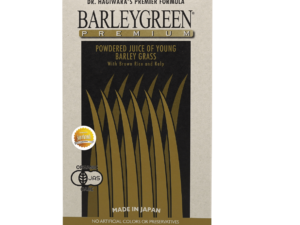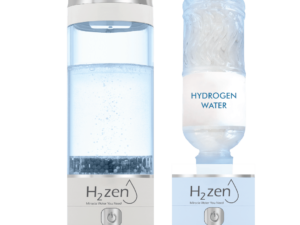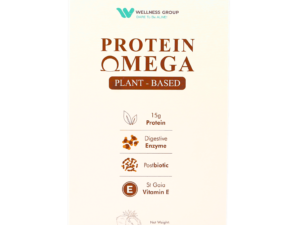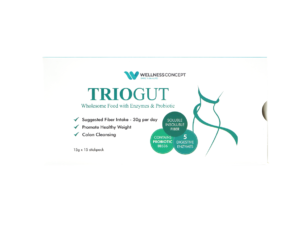Surprising fact: some freshly mixed tablets can reach up to 8–10 mg per liter for a short time, far above typical retail levels.
PPM stands for parts per million and shows how much H₂ is dissolved in a glass. A handy rule of thumb: 1.0 ppm ≈ 1 mg per liter, which helps people compare products quickly.
Many store options sit below 1.0 ppm, while quality PEM bottles often hit 2.0–3.5 ppm when used correctly. Freshness and airtight storage matter because the gas escapes fast, and that affects real-life effectiveness.
This guide is beginner friendly. It explains why readings matter, how they relate to potential benefits, and what to expect in Malaysia’s climate.
Need quick advice? Wellness Group in Malaysia is available via WhatsApp at +60123822655 during business hours: Mon–Fri 9:30 am–6:30 pm; Sat–Sun 10 am–5 pm.
Key Takeaways
- PPM (parts per million) shows dissolved H₂ concentration and helps compare products.
- 1.0 ppm roughly equals 1 mg per liter — a simple mental model.
- Store-bought tends to be under 1 ppm; PEM devices deliver higher levels if consumed fresh.
- Hydrogen escapes quickly, so timing and airtight containers affect effectiveness.
- Wellness Group offers friendly guidance via WhatsApp +60123822655 during listed hours.
Beginner’s guide to hydrogen water and hydrogen concentration in Malaysia
Everyday tap or bottled water becomes ‘hydrogen-rich’ once it holds measurable dissolved H₂.
Hydrogen water is simply drinking water with extra, invisible H₂ molecules dissolved inside. Laboratory labels use parts per and per million to show how much gas is present. A handy visual: 1 ppm ≈ 1 mg per liter, so readers can compare numbers quickly.
Studies and practical reports suggest a useful range starts near 0.5 ppm. Entry-level bottles often sit around 0.5–1.0, while SPE/PEM models can reach 2.0–3.5 when consumed right after generation.
Malaysia’s warm climate speeds gas loss. After a few days on a shelf, readings fall. Simple habits—capping tightly and drinking within minutes—help keep levels higher and more consistent.
- Think in terms of a sensible, repeatable routine rather than chasing very high numbers.
- Look for clear labels and measurement support on bottles.
- For local advice about models, maintenance, and matching options to daily life, WhatsApp Wellness Group at +60123822655 during business hours.
What does ppm mean for hydrogen water?

Simple units make comparison easy. ppm and ppb both show tiny gas concentrations. ppm is one part per million; ppb is one part per billion. That means 1 ppm = 1,000 ppb.
PPM vs PPB: parts per million and parts per billion explained
Use ppm when reading consumer labels because common devices and benefits fall in that scale. ppb values usually indicate lost gas after poor storage.
Simple visualization: 1.0 ppm equals about 1 mg of H₂ per liter
Think of 1.0 ppm as roughly 1 mg per liter of molecular hydrogen. This conversion helps buyers judge labels and meter readings quickly.
Typical ranges you’ll see on labels
- Store-bought: about 0.3–0.8 ppm
- Low-end bottles: 0.5–1.0 ppm
- SPE/PEM devices: 2.0–3.5 ppm
- Fresh tablets (brief): 8–10 ppm
- Poorly stored items: 100–500 ppb
Practical tip: aim for at least 0.5 ppm and drink shortly after generation to preserve concentration and potential benefits supported by research.
Why hydrogen concentration matters for wellness benefits
Concentration directly shapes how much benefit a single sip can deliver.
Therapeutic range: start small, aim smart
Reported effects often begin near 0.5 ppm. Many users target about 1–2 ppm for daily benefits, while short-lived higher ppm can offer stronger antioxidant action.
Is more always better? Timing and diminishing returns
Higher numbers can boost antioxidant effects and help reduce oxidative stress when consumed right away. Still, the body limits uptake, so returns shrink past moderate peaks.
Fresh-made versus stored servings
Molecular hydrogen escapes fast. Fresh-made servings usually beat stored ones because levels fall quickly at room temperature or in open bottles.
- Minimum useful range: ~0.5 ppm for noticeable benefits.
- Daily consistency often trumps occasional extremes for steady health benefits.
- Drink right after generation—at home, work, or the gym—to preserve effects.
Takeaway: balance sensible levels with good habits. Focus on fresh servings and steady use to support lasting health benefits and to better counter oxidative stress.
Measuring and maintaining ppm: from test kits to SPE/PEM technology
Measuring right after generation gives the clearest picture of real performance. Quick checks let users confirm dissolved levels and trust daily use of a hydrogen water bottle.

How to measure H₂ levels
Home options include titration drops and portable digital meters. Both give fast measurement so owners can compare readings day to day.
For highest precision, send samples to a lab. That helps validate claims in independent research.
When to test and drink
Readings should be taken immediately after production. Gas leaves quickly, so testing and drinking right away capture peak concentration and the best effects.
Electrolysis and consistent production
Modern devices use SPE/PEM membranes and platinum‑coated titanium electrodes to make steady dissolved hydrogen. Allow full cycles to finish before opening the water bottle.
What affects retention
- Bottle design: airtight lids and pressure control reduce loss.
- Water quality: minerals can scale electrodes and cut production over days.
- User habits: clean regularly, avoid shaking, and seal promptly.
Periodic measurement builds confidence and helps users dial electrolysis duration to reach desired concentration reliably.
Choosing hydrogen water bottles for effective ppm and real-world use
Practical design beats raw specs when users need reliable daily performance.
Must-have features include SPE/PEM electrolysis, platinum‑coated titanium electrodes, and airtight or pressure‑sealed lids. These parts help a bottle sustain higher ppm from generation to your first sip.
Look for bottles that clearly state expected hydrogen concentrations and offer easy measurement support such as titration drops or a digital meter. Confirmed output of 1.0-3.0+ ppm is ideal for regular use; entry models often reach 0.5-1.0 ppm while advanced units hit 2.0-3.5 ppm.
Portability matters. Compact bottles suit commute and office use, while countertop devices often give higher ppm and longer cycles. A thin lid or poor seal can undo a strong generator, so build quality matters as much as tech.
- Target consistent output, not just peak numbers.
- Prefer transparent claims and independent measurement when available.
- For 1.0 1.6 ppm day-to-day hydration, choose convenience; for higher ppm, generate just before drinking.
| Feature | Why it matters | Consumer pick |
|---|---|---|
| SPE/PEM electrolysis | Stable, repeatable generation | Advanced bottle models |
| Airtight lid | Reduces gas loss before drinking | Pressure-sealed bottles |
| Measurement support | Verify effectiveness hydrogen water | Titration drops or digital meter |
Local support: Malaysians can WhatsApp Wellness Group at +60123822655 for model advice, maintenance tips, and measurement support. Business hours: Mon–Fri 9:30 am–6:30 pm; Sat–Sun 10 am–5 pm.
Conclusion
Concentration numbers are the most practical guide when aiming for steady wellness benefits. They show the actual dissolved gas a person drinks, not just a device claim. One parts per million equals about 1 mg per liter, so readers can compare easily.
Practical targets: start above 0.5 ppm and aim near 1.0 1.6 ppm for daily goals. Higher readings boost selective antioxidant action and may help with inflammation when consumed right after production.
Consistency across days beats occasional peaks. Test with simple drops or a digital meter to confirm levels and build trust. For Malaysia-specific advice and product tips, contact Wellness Group on WhatsApp at +60123822655 during business hours. See more on hydrogen-rich water for muscle soreness.
FAQ
What is ppm in relation to molecular hydrogen in drinking bottles?
Ppm refers to parts per million, a concentration unit that shows how much molecular hydrogen (H₂) is dissolved in a liter of water. It helps compare products and set expectations: a reading of 1.0 ppm means roughly 1 milligram of H₂ per liter. Consumers use ppm to judge how “hydrogen-rich” a bottle or device makes the water.
Why use parts per million rather than parts per billion or another unit?
Parts per million is the most practical scale for dissolved H₂ because typical hydrogen-rich water ranges fall within that magnitude. PPB (parts per billion) is useful for trace contaminants but offers little real-world benefit for measuring therapeutic H₂ levels. Ppm balances readability with meaningful differences in antioxidant potential.
What are common concentration ranges listed on hydrogen water bottles?
Many bottles advertise between about 0.5 ppm and 3.0+ ppm. Entry-level products often state ~0.5–1.0 ppm, while higher-output generators and fresh-made servings can reach 1.6 ppm or above. Labels should indicate whether the value is measured immediately after production or after storage.
How much concentration is needed to get health or antioxidant effects?
Research and practitioner guidance often point to a therapeutic minimum near 0.5 ppm, with many users seeing stronger effects at 1.0–1.6 ppm or higher. That said, benefits vary by individual, timing, and duration. More H₂ can increase effect up to a point, but returns diminish and timing matters.
Does higher ppm always produce better results?
Not necessarily. Higher concentrations can deliver stronger antioxidant action, but benefits level off beyond certain thresholds. User habits, frequency of consumption, and how fresh the water is play major roles. Moderation and consistency matter more than chasing very high numbers.
How quickly does dissolved hydrogen escape from a bottle?
Hydrogen gas is small and diffuses rapidly. Fresh-made H₂ levels are highest immediately after generation and fall over hours or days depending on bottle design and seal. Stored water in a tight, specialized bottle retains H₂ longer than open or poorly sealed containers.
How can someone measure dissolved H₂ at home or in a lab?
Common methods include chemical titration drops, portable digital H₂ meters, and laboratory gas analysis. Simple test kits give quick estimates; digital meters and lab checks provide greater accuracy. It’s best to test immediately after production to see peak concentration.
When is the best time to test and to drink after producing hydrogen-rich water?
Test right after generation to capture peak ppm. Drinking immediately or within a short window preserves the highest dissolved H₂ exposure. If storage is necessary, use an airtight, high-barrier bottle and keep it cool to slow loss.
What production technologies affect consistent ppm levels?
Electrolysis systems that use solid polymer electrolyte (SPE) or proton exchange membrane (PEM) designs produce reliable H₂ with fewer contaminants. Quality electrodes, controlled current, and proper maintenance also influence output and consistency.
Which design features help a bottle retain higher ppm longer?
Look for airtight seals, low-permeability materials (glass or metal liners), compact headspace, and validated measurement or indicator features. Good user instructions about filling, sealing, and timing also improve retention.
How does water quality influence achieved concentration?
Source water minerals, pH, and total dissolved solids can affect electrolysis efficiency and final H₂ yield. Many devices recommend using filtered or low-mineral water to optimize production and extend device life.
Are there reliable standards or labels to trust on hydrogen bottle claims?
Buyers should prefer products that publish verified test data, third-party lab results, or clear measurement protocols. Marketing claims without documented measurement or immediate post-production values warrant skepticism.
Can users increase dissolved H₂ retention with simple habits?
Yes. Fill bottles fully to reduce headspace, close caps tightly, keep bottles cool, and consume soon after production. Avoid frequent opening and store in the shade to slow diffusion losses.
What should consumers look for when choosing a bottle to deliver effective dissolved H₂?
Key attributes include verified output in the 1.0–3.0+ ppm range (or documented minimum 0.5 ppm), airtight construction, SPE/PEM electrolysis technology if applicable, and accessible testing support. Clear instructions and reliable customer service help ensure real-world performance.
Where can someone in Malaysia get product support or contact Wellness Group?
Wellness Group provides local support and product details in Malaysia. Interested users may contact them via WhatsApp at +60123822655 during business hours for guidance on bottles, concentrations, and testing options.
